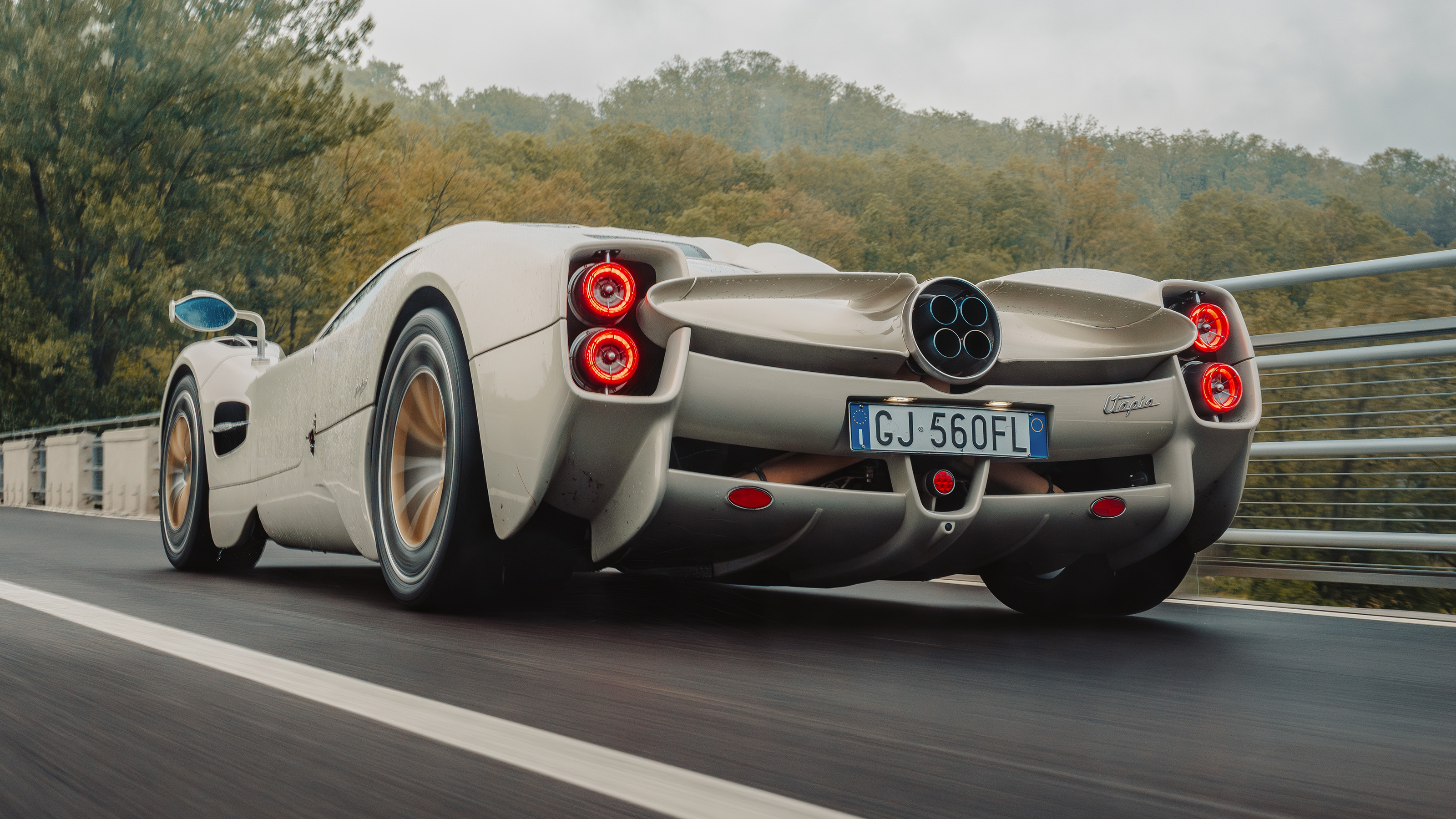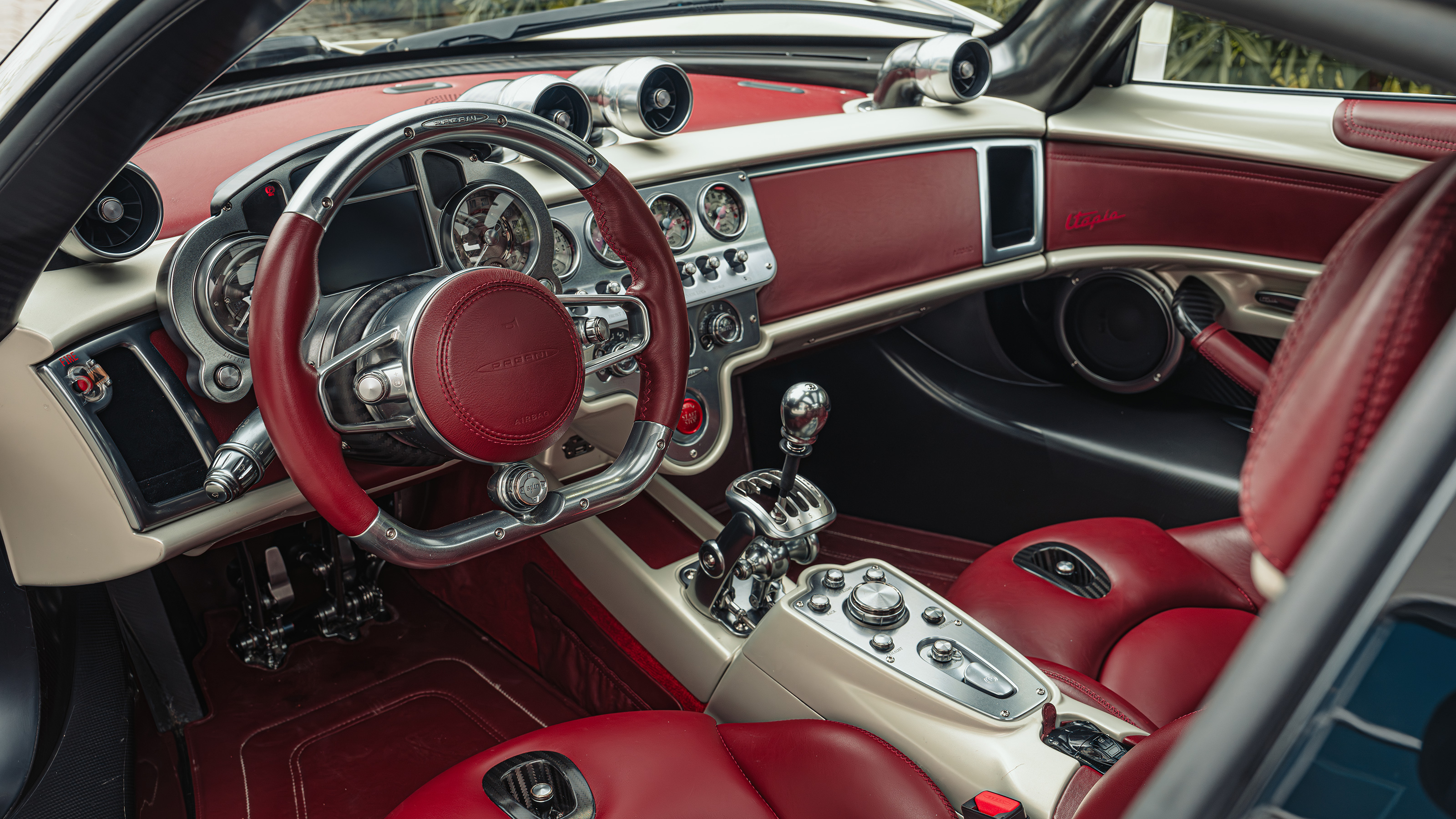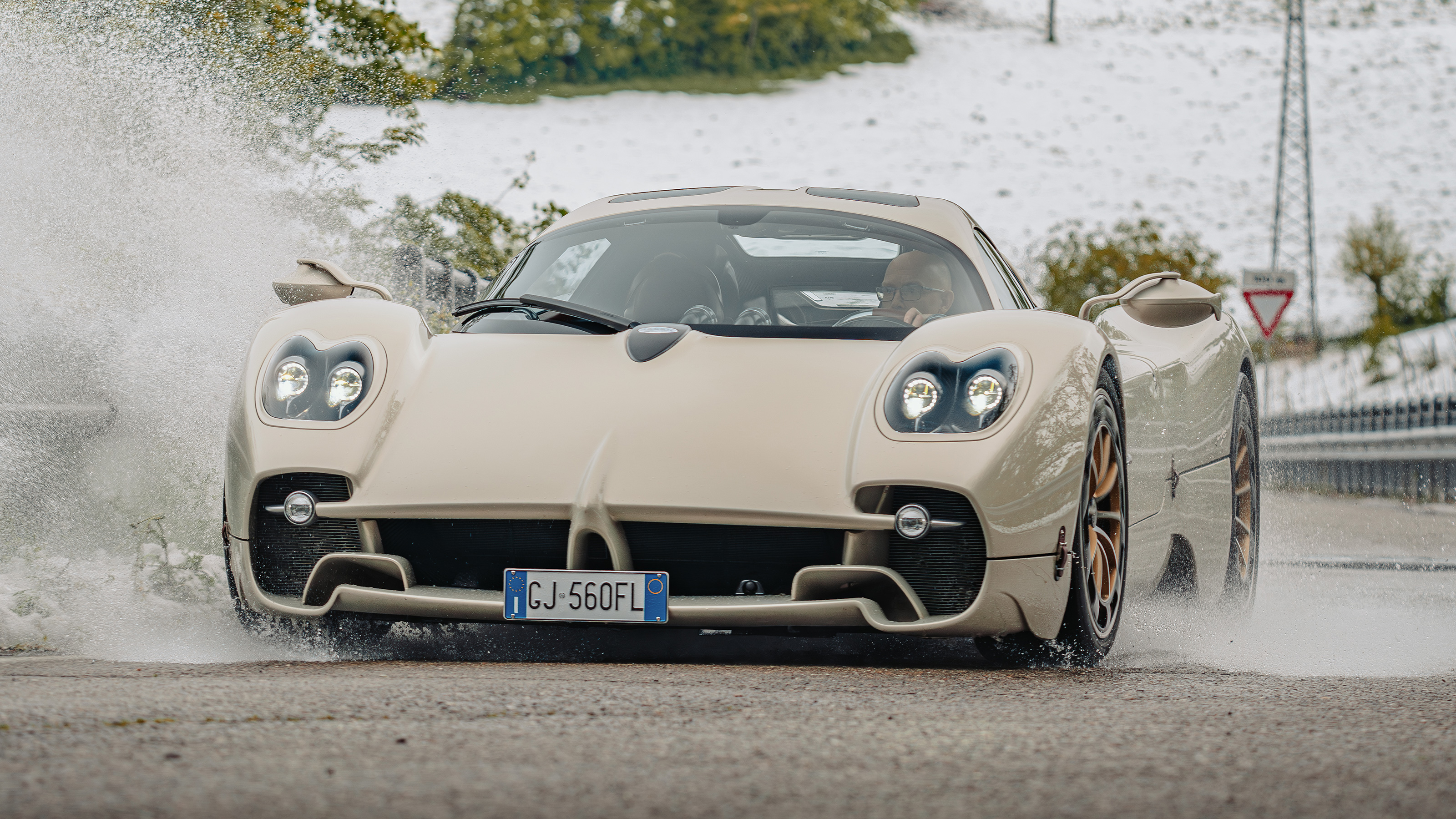
Pagani Utopia review
Interior
What is it like on the inside?
A retro-futuristic renaissance masterpiece. Like being inside a Leonardo da Vinci fever dream. It starts with these wonderful little finger latches that open the doors. They swing and pivot up and out silently – something new for Pagani after the Zonda’s conventional doors and the gullwings of the Huayra.
They reveal this riot – or perhaps more accurately – this symphony, of metal and leather, of levers, dials and switches, of gauges and vents that churns with imagination, drama and creativity. It’s like descending into a miniaturised baroque theatre, you almost expect a velvet curtain to rise across the windscreen, for applause to greet you. As it is when you turn the Utopia off, there’s a violin exit tune played through the speakers, composed by Horacio Pagani himself.
What there isn’t is a giant central screen. Good. In fact visually it’s almost a shame that there’s a screen at all, as it has elbowed the rev counter and speedo to the edges, when they could be bigger and even more glorious. However, that screen, operated by a simple, straightforward clickwheel, actually does a lot of heavy lifting, from giving you dynamic info to adjusting the mood lighting and running CarPlay. It’s a touch of the 21st century in a cabin that’s anything but.
Is the Utopia practical?
For big bags, no. You’ve got fitted luggage in carbon boxes in the flank, but they’re not big and accessing them means undoing buckles and raising the rear clam (a two person job) to then undo more buckles. Bit of a hassle.
There is another lovely leather tube bag behind seats, but storing stuff around the cabin is easy: there are fine leather pouches alongside the transmission tunnel and tucked down between seat and sill, plus phone storage ahead of the gearlever.
The seat is simple. It’s one piece, slides forward and backwards and tilts like a rocking chair via the toggle between your legs. The steering wheel moves over a wide range, and brings the instrument binnacle along for the ride. It’s easy to get a spot-on driving position and even though you sit very low, eyes seemingly on a par with the tops of the front arches, the Utopia is actually pretty easy to position, you feel confident in it. Be warned the very wide angle rear camera can make objects loom suddenly.
Tell me more about the materials.
Almost everything you look at is machined aluminium. Some 777 parts across the Utopia in total (782 parts for the automatic apparently). This is all done in house by Pagani: the machining shop is possibly even more remarkable than the main atelier where they build the cars.
It takes 30 hours for the state-of-the-art five axis machines to carve out an aluminium steering wheel such is the complexity of the shape. Again this is something new for Pagani after the Zonda’s wooden wheel and the Huayra’s carbon rim. Aluminium parts can be anodised or polished and generally given a finish more akin to jewellery. As a result the cabin feels gorgeously presented and celebrated. It is glorious in its detailing, unparalleled in its artistry.
What’s the overall impression?
That no-one does a car cockpit anything like as decadently as this. It should be completely OTT this level of costume, the full Liberace, distracting and overly theatrical. And yet it isn’t. It works. You sit in there for hours, just fiddling with stuff, enjoying the tactility and ASMR sound effects, discovering new things and relishing it all.
Featured

Trending this week
- Car Review
BMW iX3






